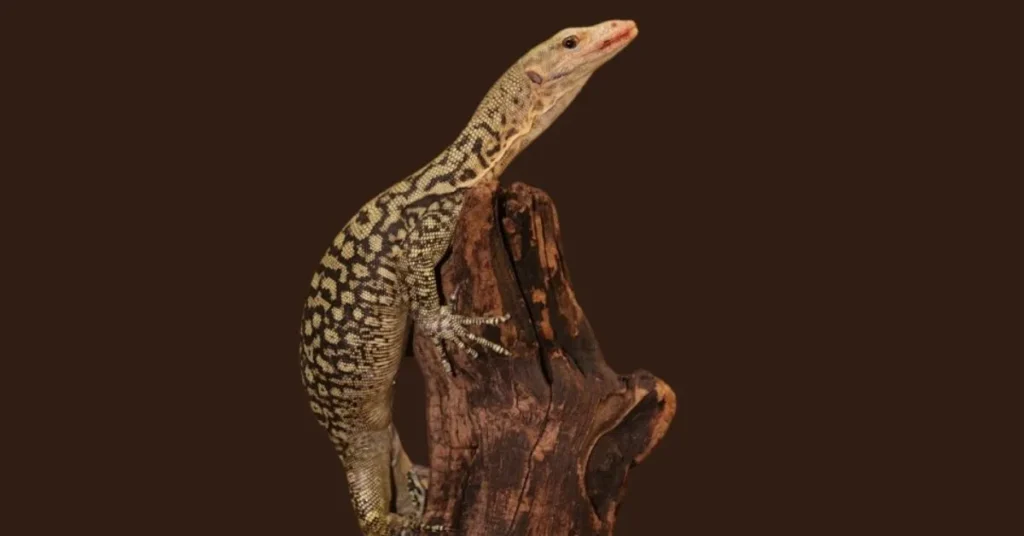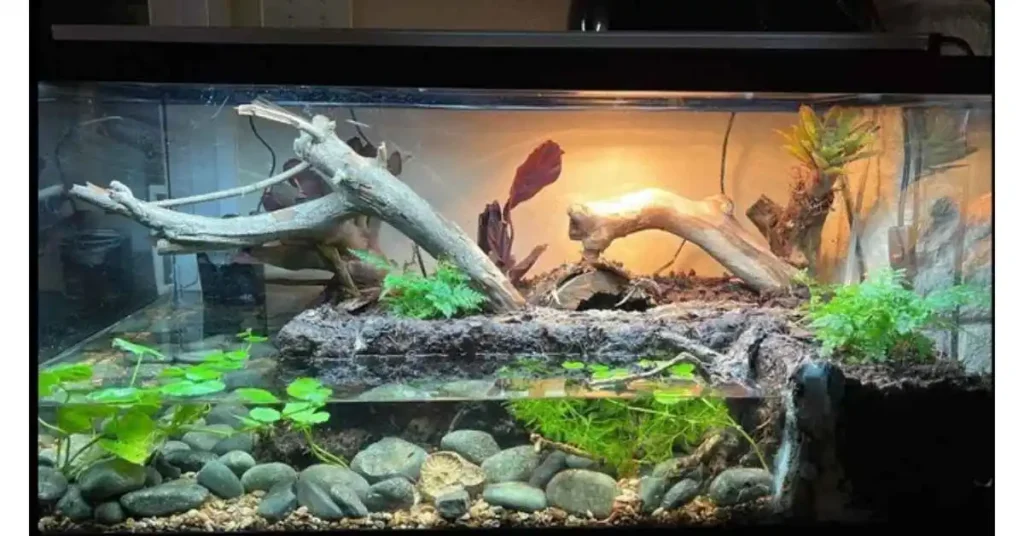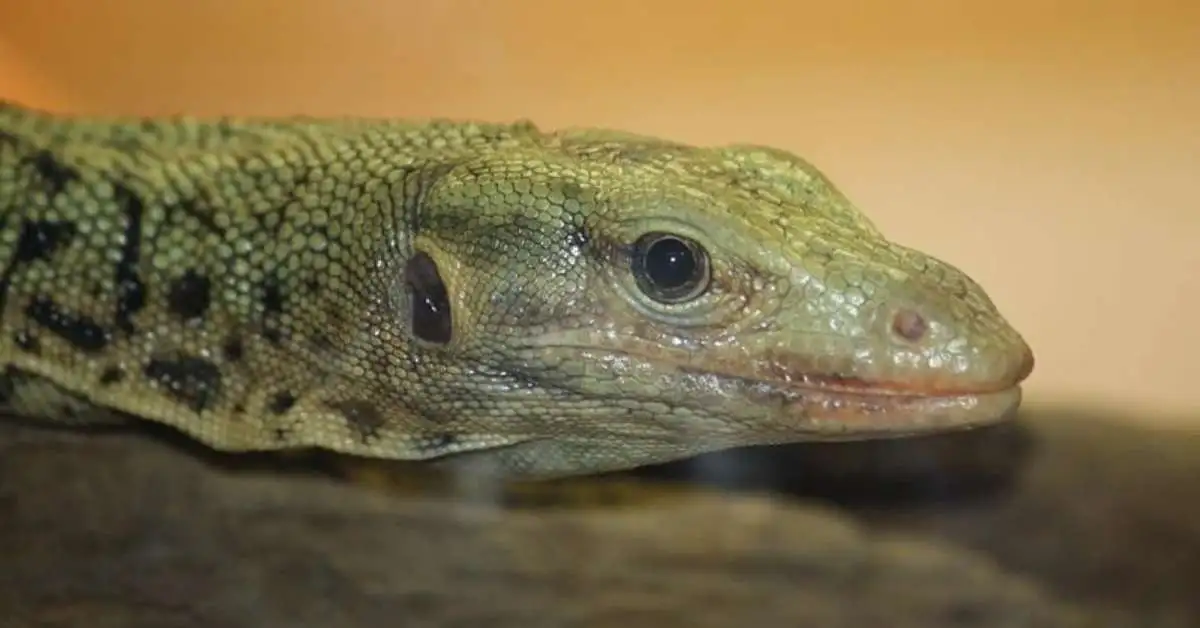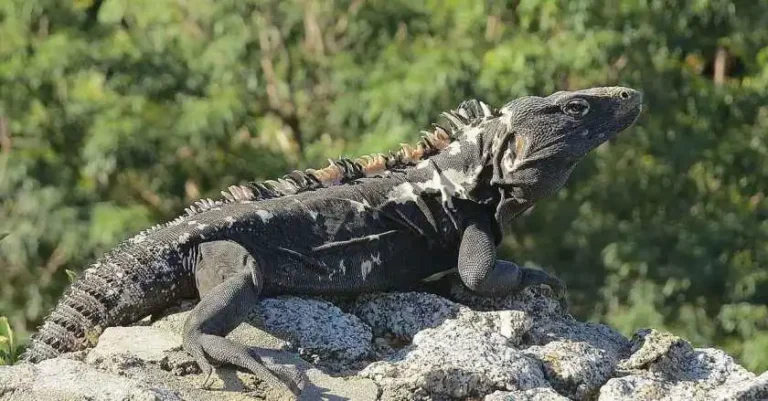Quince Monitor
Quince Monitor is a beautiful creature. On top of which there are black and yellow spots. This organism is found in the islands of Indonesia. This reptile can grow up to about three to four feet long. This creature is much loved for its intelligence and beautiful build. It likes low humidity and dryness. They are also kept as pets. And it preys on small organisms. It is handled by someone who has experience, and the care is very specific.

Overview of Quince Monitor:
- Scientific Name:Varanasi melinus
- Common Name: Yellow monitor
- Size: The length of this reptile can be about three to four feet
- Weight: Their weight can be up to two to three kilograms.Here again from three to seven pounds.
Habitat and Range of Quince Monitor:
The quince monitor is a type of lizard found in the islands of IndonesiaAmong them is Opi Island in particular, the lizard prefers to live in moist areas like forests, swamps, and river banks. It lives both in trees and on the ground, so climbing trees is not a difficult task for it
The behavior of Quince Monitor:
It’s a smart lizard. Which is more active during the day.And hunts only during the day. It quickly adapts to any environment. If it feels any danger, it runs away and tries to climb trees. This lizard prefers solitude, but it also spends some time with others. It likes to eat insects, small organisms, and some fruits.
Breeding of Quince Monitor:
Quince monitors are breeding only once a year. The female lizard lays eggs that can be 6 to 15 eggs. These eggs are placed in soft sand to keep them warm. These eggs break down automatically after three to four months and the babies come out of them and start living on their own. The children themselves go out to find their prey and try to save themselves.
Life span of Quince Monitor:
In the wild:
Quince monitors have a lifespan of about 10 to 15 years in the wild. Their life in the forest is subject to hunting disease and other threats that reduce their lifespan. The organism also dies quickly due to lack of food and other threats.
In the captivity:
Quince monitors have an extended lifespan in captivity, which can range from 10 to 20 years. If they are properly cared for and treated well, they can live longer. Being in captivity also increases their lifespan because they are not exposed to other dangers that they would have to face in the wild. Their life revolves around human care.
Housing For The Quince Monitor:
Enclosure Size:
A large cage is essential for quiz meters. A cage six feet long, four feet wide, and six feet high is sufficient for one adult. Plant tree branches to climb the cage, On which they can climb and reach the Basani cage. Take proper care of temperature and humidity. Build the cage in such a way that it is ventilated and has a cross-flow of air.
Humidity:
The moisture content of the quince monitor should be around 60% to 80%. Moisture maintains their health and also helps in digging. If these creatures are in captivity, moisten their place with water. Because Water keeps the soil moist. Provide good ventilation for air crossing. This humidity keeps their skin healthy. And improves their physical condition.
Substrate:
The substrate of the quince monitor should be soft and natural. In which sand soil and open ground have been included.Because they can dig in the soil.Which gives them a sense of the natural environment.Because it improves their health. The substrate should be kept clean as it protects them from various diseases.
Lighting:
Lighting is essential for a quince monitor. Make sure to use UVB light as it helps in vitamin D formation and calcium absorption. The light in this creature’s house should be on for about 10 to 12 hours every day. Arrange to turn off the light at night so that its light does not disturb the sleep of this creature. install lights and heat lamps in his house in such a way that the lizard cannot be harmed by them.
Heating:
Temperature is also important for this lizard. Daytime temperature should be 32 to 40 degrees Celsius. Provide them with the best place for basking where they can sit and take their heat. And keep the temperature at 24 to 28 degrees at night. For this, there should be a constant heating system so that there is no drop in temperature.
Water:
Fresh water is essential for this organism to drink. Provide a large water bowl for them to bathe in as they like humidity. Change the water daily to avoid germs and provide clean water. Keep sprinkling water in his house periodically to maintain humidity. Moisture is very healthy for their skin, so maintain moisture.

Food and Diet of Quince Monitor:
It is a food animal so it likes to eat insects, small birds mice, etc. Provide them with fresh food daily. You can also give them ready-made food, but make sure that it is not for them on a regular basis. Maintain a balanced intake of meat and use vegetables for them as well. Feed them according to their size and age. Use special supplements for them to increase vitamins and minerals.
Quince Monitor as A pet:
Quince’s monitor is very interesting as a pet. This creature is very intelligent and therefore fun to spend time with. It requires adequate space and heat to maintain. It likes to eat a lot of things including meat and small insects. If you take proper care of it and train it well, it can be quite friendly and calm. Before catching him, it is important that you carefully assess his interests and needs
Common Health Problems of Quince Monitor:
Skin problem:
Skin problems can occur due to lack of humidity and improper temperature which causes rashes on their skin.
Digestive disorders:
Improper diet and drinking dirty water or dehydration can affect elimination, which can lead to constipation and constipation.
Vitamin deficiency:
Their various diseases can be due to a lack of vitamins and food such as weakness or bone health problems.
Conclusion:
The quince monitor is an interesting animal, which is a pet. This organism needs care, food, and a good environment, in which it can be considered safe. They should be provided with proper nutrition and proper temperature to avoid health problems. It likes moisture. These organisms love moisture. If they are properly cared for and properly trained, they become quite friendly. If you understand and know it well, it becomes your best companion.







